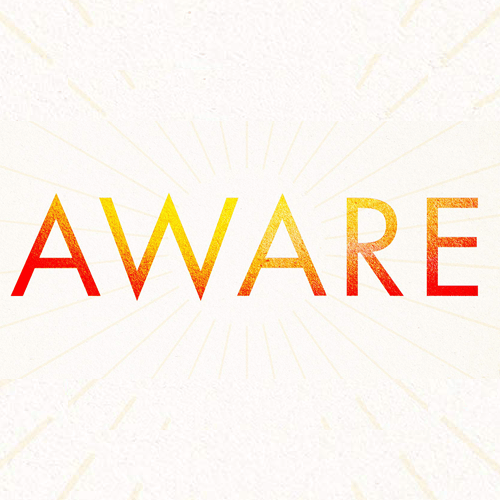
Dan Siegel, MD, is an internationally acclaimed author, educator, and child psychiatrist who has published extensively for both professional and lay audiences.
The executive director of Mindsight Institute, Dr. Siegel is known for his unique ability to make complicated scientific concepts accessible. Recently, Dan sat down with Jenn Brown, from 1440 Multiversity, and the two talked about the science behind the transformational power of awareness practice:
1440: Talk to us about the connection of mind, body, and emotions as it relates to learning. What do educators need to know in this area?
Dan Siegel: Emotions can be thought of as the inner and interpersonal process that “evokes motion” and shape how our body feels and how our mind is motivated to act. Educators can help students learn to sense the inner and inter nature of emotion and how this important part of our lives helps influence their own and others’ behaviors and ways of perceiving and thinking.
1440: Can you share some insights about interpersonal neurobiology (IPNB)? What does it mean to teach with the “brain in mind”? How do we develop a resilient and flexible mind in students?
Dan Siegel: IPNB is a framework for understanding the human mind and mental health that builds on the wide array of scientific disciplines to find the consilient or universal findings underlying their usually independent perspectives. When teachers learn about IPNB, they are given insights into what the mind is and how to help cultivate a strong and resilient mind in their students.
Teaching with “the brain in mind” utilizes knowledge gleaned from neuroscience to give educators tools that allow the fundamental process of neuroplasticity—how the brain changes in response to experience—to guide their ways of engaging with students to optimize learning.
For example, by viewing the mind as a “self-organizing, embodied, and relational process that regulates the flow of energy and information,” teachers can harness the power of integration—the linkage of differentiated parts—to help create optimal regulation in their students’ skill sets. This includes teaching students to monitor energy and information flow with more stability so they can perceive with more focus, depth, and detail and then modify that flow in a way to promote integration. Regulation toward integration is the basis for resilience and flexibility.
1440: You write about the Whole-Brain Child. Can you talk about what that means? How might this information support teachers in creating optimal learning environments for students?
Dan Siegel: The idea of the Whole-Brain Child is that we as parents, teachers, or others who support the growth of children and adolescents can understand that the whole child develops within relationships as well as within the pathways of their own neural growth. Whole-brain also means that an adult understanding the many parts of the brain and how they function together—how they are differentiated and linked, what is called “integrated”—is the basis for optimal development.
How you promote an integrated brain is how you help to cultivate traits in a child of resilience, flexibility, curiosity, empathy, compassion, and insight.
An integrated brain is what research has shown is the best predictor of well-being, and this Whole-Brain Child approach helps a child to flourish and thrive as it promotes integration neurally and interpersonally. Teachers learning this approach can help create a “generative social field” that, from an IPNB perspective, is one that is integrative in that it supports differentiation and linkage within the classroom environment.
1440: Your work on the “healing power of emotions” is intriguing. Can you talk about our hard-wiring for connection and what that might mean for schools?
Dan Siegel: Healing is making whole, and emotions are the inner and interpersonal process of shifts in integration.
When these are the constructive or “positive” emotions associated with awe, gratitude, joy, love, connection, and compassion, we see that integration is enhanced and healing cultivated.
We evolved to be collaborative, connected creatures, story-telling social beings who evolved to work together. Yet much of what modern culture promotes is against these connecting emotional experiences, and teachers can work to intentionally create such a collaborative culture within the classroom.

1440: How does awareness fit into the equation of learning? How can awareness practices cultivate student engagement, empathy, and attention?
Dan Siegel: Being aware appears to be essential for all of the many ways we learn—in classroom settings, in personal study, in parenting, and in psychotherapy.
Consciousness permits choice and change to unfold.
When we work directly with ourselves as educators, we can expand our access to the knowing aspect of consciousness—of being aware. We can also teach students directly how to become more engaged in their education, and in their lives, by giving them the strength of “integrating consciousness”—of distinguishing the being of aware of knowing from that which we are aware of, the knowns. In this integration, we empower students to be more insightful and more empathic.
The three pillars of such mind-training practices include:
Strengthening Focused Attention
Open Awareness
Kind Intention
Research reveals that when these three aspects of mind are trained, many positive changes occur including the stabilizing of attention; the increase in our receptivity to the experience of being aware; and the enhancement of our care for our inner selves and for the well-being of others. And if these were not enough, such awareness practices have been shown to enhance immune function, cardiovascular health, the health of our chromosomes, and the reduction of inflammation. In addition, such mental training also increases the integration of our neural connections—the basis for the regulatory functions of our brain.
Join Dan Siegel January 18 – 20, 2019 at 1440 Multiversity for an intensive weekend workshop diving deeply into the true essence and full experience of awareness. Based on his new book, Aware, Dr. Siegel leads an in-depth look at the science that underlies meditation’s effectiveness.
Learn more – Aware: The Science and Practice of Presence
